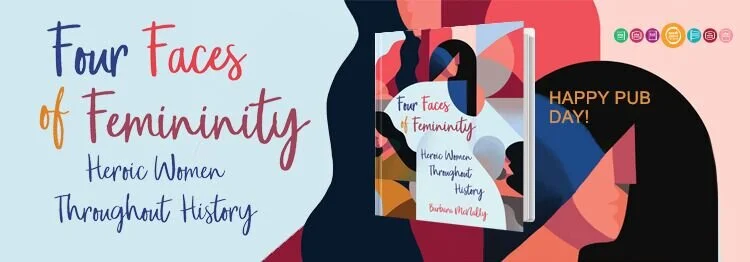Part 5: Collaborating With Your Spirit Guides
Many women have asked me to write their stories after reading my memoir, Unbridled, and Wounded Warrior, Wounded Wife. Writing these books taught me the healing power of storytelling. While it is sometimes challenging to be honest and raw about aspects of our journey, the more we open up the better we can see our lives from a different perspective and make clearer decisions going forward. Putting our experiences into words transforms and heals.
With that in mind, here's the fifth post in my series on the power of storytelling. Every journey of 1,000 miles begins with the first step. Let’s begin writing the stories of our lives whether we publish them or not. In August, I'll be leading a writing workshop for the wives of wounded warriors in partnership with Hearts of Valor, and will dig even deeper into these themes! If you're interested in attending, you can apply here to join Hearts of Valor.
But for now, let's talk about how your spirit guide can be instrumental in tapping your authentic, personal story.
What are spirit guides?
Are there people, figures, or animals who return to you again and again in dreams? Or have you ever seen a fleeting shadow or felt a presence while walking in or communing with nature? In all likelihood, you were being visited by your spirit guide during these times. Various cultures define the spirit guide differently, but the essence is this: Spirit guides are ancient, ancestral, ethereal beings assigned to us at birth who gently guide us through our life events. Even if you've never seen or communicated directly with them, they've been there all along, watching over you and keeping you on the right path.
With a little work and concentration, you can open the lines of communication with your guide. Doing so can be incredibly rewarding, since it gives you access to some of your own deepest desires and puts you in touch with hidden aspects of your inner self. Your spirit guide can help you understand and tell your story with clarity and eloquence, if you let them.
Exercise: Creating a dialogue with your spirit guide
In all likelihood, your spirit guide has already appeared to you in some form. Think back on your most vivid dreams, on chance meetings with unusual people or wild animals, on images that float into your mind while you meditate.
If nothing specific comes to mind, take a few moments to meditate now. Hold your own ancestry in your mind. Think about where your family came from, the tribes or ancient lands your ancestors inhabited. Find or draw maps of these lands, their ancient symbols, their languages and native animals. Picture yourself walking the landscape. Whoever you encounter there, greet them warmly for they are your guide. They may appear as a person, an animal, a cloud, a light, or an energetic feeling. Be open and accepting of whatever appears to you.
Now that you can visualize yourself with your guide, start by writing about how it feels to be in their presence. How does your body feel? What emotions dominate your state of mind? Are you more invigorated or relaxed? Do you feel inquisitive or satisfied?
Next, open a dialogue. Stand before your spirit guide and ask:
What message do you carry?
What lesson dominates my life?
How does the world see me?
What is my purpose?
How can I be my most authentic self?
The answers may come as images or phrases. Write down anything that comes to your mind, using the automatic writing techniques we explored in part 4. If you don't feel the flow, don't get discouraged. Thank your guide, end the session, and try again another day. It may take time to build the conduit you need to hear and understand what you're being told.
Let your intuition guide you
It can feel strange and disorienting to converse with spirit guides, but doing so can be incredibly rewarding. Your guide knows you on the soul level, and can help you understand yourself in deep, meaningful ways.
Also be aware that the form your guide takes is significant. Often, your guide will appear as a symbolic image that reflects what you and your life are about. That metaphor can be your mirror, showing you the unexplored regions of your essential identity. Being brave and open through these deep inner explorations will help you understand and tell your story truly and fearlessly.
And if you are the wife of a wounded warrior yourself and would like to share your story in person with other spouses, I would love for you to apply here to attend SPA Day in April! By opening up to others you will heal yourself, connect with others to feel less alone, and help those around you begin the healing process.
Can't wait to share more on the power of storytelling with you next week!


